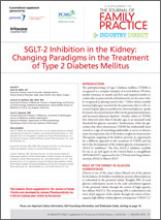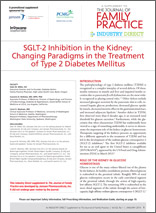Article Type
Changed
Tue, 05/21/2019 - 12:17
Display Headline
SGLT-2 Inhibition in the Kidney: Changing Paradigms in the Treatment of Type 2 Diabetes Mellitus
Sponsor
This INDUSTRY DIRECT supplement to The Journal of Family Practice is brought to…
Article PDF
Issue
The Journal of Family Practice - 63(1)
Publications
Page Number
S1-S32
Sections
Article PDF
Article PDF
Sponsor
This INDUSTRY DIRECT supplement to The Journal of Family Practice is brought to…
Sponsor
This INDUSTRY DIRECT supplement to The Journal of Family Practice is brought to…
Issue
The Journal of Family Practice - 63(1)
Issue
The Journal of Family Practice - 63(1)
Page Number
S1-S32
Page Number
S1-S32
Publications
Publications
Article Type
Display Headline
SGLT-2 Inhibition in the Kidney: Changing Paradigms in the Treatment of Type 2 Diabetes Mellitus
Display Headline
SGLT-2 Inhibition in the Kidney: Changing Paradigms in the Treatment of Type 2 Diabetes Mellitus
Sections
Disallow All Ads
Alternative CME
Consolidated Pubs: Do Not Show Source Publication Logo
Use ProPublica
Article PDF Media
Document

